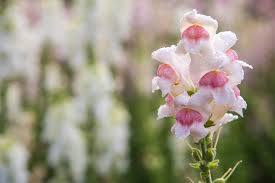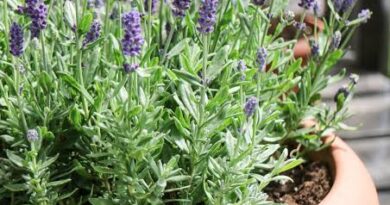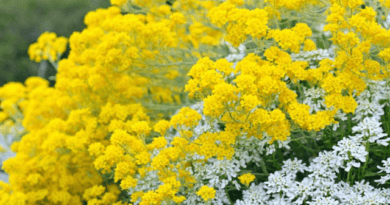Dragon Flowers (Dracunculus Vulgaris): Complete Growing and Care Guide
Dragon Flowers, scientifically known as Dracunculus vulgaris, are a fascinating and captivating species that never fails to enthrall both experienced botanists and casual garden enthusiasts alike. With its unique and mysterious appearance, this plant stands out from the crowd, earning its name from the dragon-like shape of its inflorescence. As enchanting as it may look, it’s essential to understand the various aspects of this extraordinary flower to truly appreciate its beauty.
The Dragon Flower boasts a mesmerizing appearance that leaves a lasting impression on anyone who lays eyes on it. It features a tall, erect stem that can reach up to three feet in height, with a distinctive coloration ranging from deep maroon to blackish-purple. This striking hue serves as a perfect backdrop for its centerpiece, the inflorescence, which resembles a fierce dragon’s tongue, complete with a long, protruding, tongue-like spadix. The spadix is often a shade lighter than the surrounding petals, giving it a dramatic and mystical allure.
Native to the Balkans and certain regions of southwestern Europe, the Dragon Flower thrives in a Mediterranean climate. It prefers to grow in fertile, well-draining soils and can be found in woodland areas, near riverbanks, and in shaded spots with sufficient moisture. Gardeners in other parts of the world have also successfully cultivated these captivating flowers, provided they recreate the plant’s preferred conditions.
Like many other perennial plants, the Dragon Flower follows a life cycle that spans multiple seasons. It begins as an underground tuber, dormant during the colder months of winter. As spring approaches, the tuber awakens from its slumber, sending up a single stem adorned with the distinct dragon-shaped inflorescence. The flowering period typically lasts for a few weeks, during which the plant attracts pollinators with its pungent scent. After the flowers have been pollinated, they develop into attractive red berries, containing seeds that will continue the life cycle when dispersed.
Throughout history, the Dragon Flower has held various symbolic meanings in different cultures. In some societies, it has been associated with strength and power, drawing parallels to the mythical creatures after which it is named. Conversely, in others, its unusual and exotic appearance has led to connections with mystery and danger. The plant’s peculiar scent, which resembles the odor of rotting flesh, has earned it the nickname “Voodoo Lily” in some regions.
While Dragon Flowers possess an air of exoticism, they can be cultivated with relative ease, given the right conditions. Gardeners interested in growing these captivating specimens should mimic their natural habitat, providing well-draining, fertile soil with ample organic matter. Planting the tubers in a partially shaded area can help replicate the ideal environment for their growth. Adequate watering during the growing season and a period of dormancy during winter will encourage healthy, vigorous blooms in subsequent years.
Additionally, the Dragon Flower (Dracunculus vulgaris) is an extraordinary botanical wonder that captivates with its dragon-like inflorescence, striking colors, and alluring aroma. Found in select parts of Europe, this perennial plant demands attention with its distinctive appearance, making it a treasured addition to any garden or collection. With a little care and understanding of its needs, enthusiasts can welcome the enchantment of the Dragon Flower into their lives and witness nature’s mastery at work.
Read Also: Options for Genetic Improvement in Tropical Livestock
History and Significance of Dragon Flowers
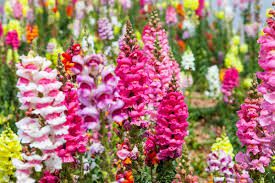
The Dragon Flower (Dracunculus vulgaris) has a rich history and holds significant cultural importance in various regions where it is native. Its captivating appearance and intriguing scent have made it more than just a botanical curiosity; it has become intertwined with myths, symbolism, and human fascination over the centuries.
The Dragon Flower’s roots can be traced back to the Balkans, specifically regions of Greece and the neighboring countries. It is believed to have been present in these areas for centuries, with its origins shrouded in folklore and traditional stories. The ancient Greeks and Romans were familiar with the plant and likely encountered its striking inflorescence in their natural surroundings.
Throughout history, the Dragon Flower has been a subject of cultural symbolism and storytelling. Its dragon-like appearance has led to associations with mythical creatures in various cultures. In Greek mythology, dragons were considered powerful and fearsome beings, often guarding valuable treasures. The resemblance of the flower’s spadix to a dragon’s tongue or fiery breath further reinforced these mythical connections.
In some societies, the Dragon Flower symbolizes strength, resilience, and transformation. The fact that it emerges from an unassuming tuber during spring, grows into a tall and majestic plant, and then bears fascinating flowers can be seen as a representation of life’s cycles and the potential for beauty arising from the ordinary.
In addition to its association with strength, the flower’s unique and exotic appearance has also linked it to mystery and the unknown. It has been portrayed in folklore as a flower of magic and enchantment, sometimes connected to witches and wizards due to its alluring but unsettling scent. This mystique has given rise to local names such as “Voodoo Lily” and contributed to its significance in rituals and ceremonies.
Cultural Uses and Practices of Dragon Flowers
Beyond its historical and cultural significance, the Dragon Flower has also become a desirable plant for many horticultural enthusiasts. Its enchanting appearance and unique growth pattern have led to its cultivation in gardens and green spaces worldwide. With proper care, gardeners can introduce this extraordinary specimen to their landscapes, where it becomes a focal point and conversation starter.
As with many native plant species, the Dragon Flower faces threats to its natural habitats, including deforestation and urbanization. Conservation efforts in its native regions seek to protect and preserve the plant and its ecosystems. Awareness of the significance of this unique flower has prompted some regions to adopt protective measures and promote responsible gardening practices to ensure its survival for future generations.
In addition, the Dragon Flower (Dracunculus vulgaris) is more than just a botanical wonder; it holds a deep historical and cultural significance in the regions where it is native. With its mythical associations, captivating appearance, and intriguing scent, it has captured the imagination of people throughout the ages. From ancient folklore to modern horticulture, the Dragon Flower continues to enchant and inspire, leaving a lasting impact on those who encounter its remarkable beauty.
Read Also: All You Need To Know About Animal Shelters
Complete Growing Guide of Dragon Flowers
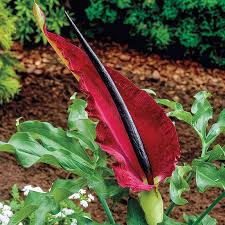
The Dragon Flower, also known as Dracunculus vulgaris or Voodoo Lily, is a captivating and unique plant that can add a touch of mystery and enchantment to any garden. Follow this growing guide to cultivate these fascinating flowers and witness their striking beauty firsthand:
1. Choosing the Right Location:
Dragon Flowers prefer partial shade to thrive. Select a location in your garden that receives dappled sunlight or filtered shade, as direct sunlight can scorch their leaves. Additionally, choose a spot protected from strong winds to prevent damage to the tall stems.
2. Soil Requirements:
The ideal soil for Dragon Flowers is fertile and well-draining. They can tolerate a range of soil types, including loamy and sandy soils. However, ensre the soil is rich in organic matter and maintains good drainage to prevent waterlogged conditions, which can cause rot.
3. Planting Time:
The best time to plant Dragon Flower tubers is in the early spring, after the last frost has passed. This gives them ample time to establish their root systems before the summer heat.
4. Planting Depth:
When planting the tubers, bury them about 4-6 inches deep. Position the tuber horizontally in the soil, with the spadix pointing upwards.
5. Watering:
During the growing season (spring to early summer), keep the soil evenly moist but not waterlogged. Dragon Flowers appreciate regular watering, especially during periods of dry weather. However, avoid overwatering, as excessive moisture can lead to root rot.
6. Fertilizing:
To promote healthy growth and robust flowering, apply a balanced fertilizer to the soil in early spring, just as new growth emerges. Follow the package instructions for proper dosage, and avoid over-fertilization, as it may result in excessive foliage growth at the expense of flowers.
7. Mulching:
Applying a layer of organic mulch around the base of the plants can help retain soil moisture, suppress weed growth, and protect the tubers during winter dormancy.
8. Support and Staking:
Dragon Flowers can grow quite tall and may require support to prevent their tall stems from bending or breaking. Use stakes or a discreet plant support system to prop them up, particularly in windy locations.
9. Pruning and Deadheading:
After the flowering season, remove any faded or spent flowers to encourage the plant to put its energy into producing new growth and potentially more flowers.
10. Winter Care:
As winter approaches, Dragon Flowers will naturally go dormant. The leaves will wither and die back, and the plant will enter a period of rest. Cut back the dead foliage and protect the tubers from freezing temperatures with a thick layer of mulch.
11. Propagation:
Propagating Dragon Flowers can be done by dividing the tubers during their dormant period in late autumn or early winter. Carefully dig up the tubers and separate the smaller offsets from the main tuber, ensuring each division has some roots attached. Replant the divisions at the appropriate depth.
12. Pest and Disease Control:
Dragon Flowers are generally quite resilient and not commonly bothered by pests or diseases. However, keep an eye out for common garden pests like aphids and slugs. Use appropriate pest control methods if needed, such as organic insecticides or physical barriers.
By following this growing guide, you can successfully cultivate and enjoy the alluring beauty of the Dragon Flower (Dracunculus vulgaris) in your own garden. Its striking appearance and unique characteristics are sure to captivate and spark the curiosity of anyone who encounters it.
Read Also: What is ‘Corporate Education’ And Why it is Critical for Business Success

